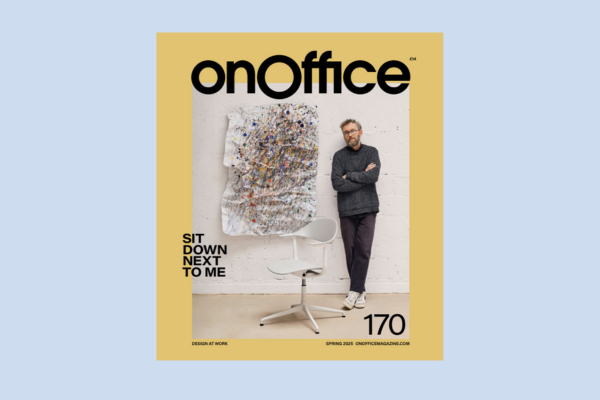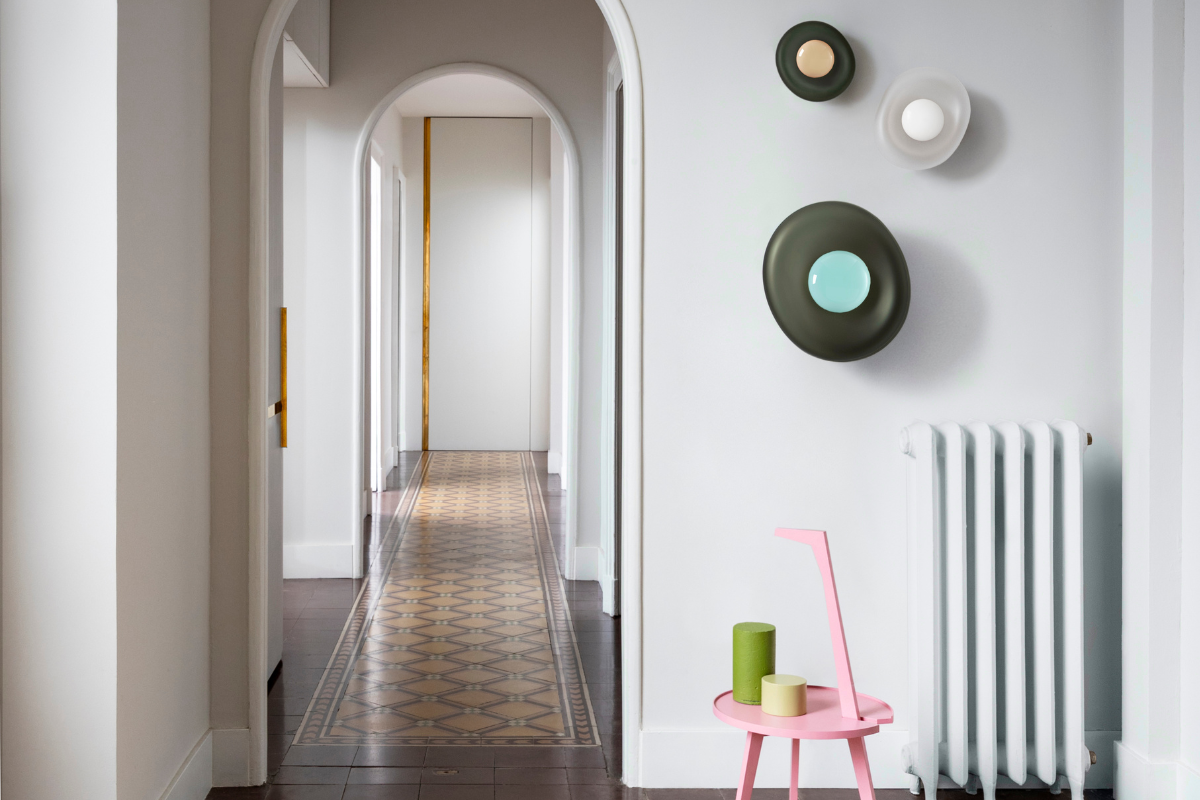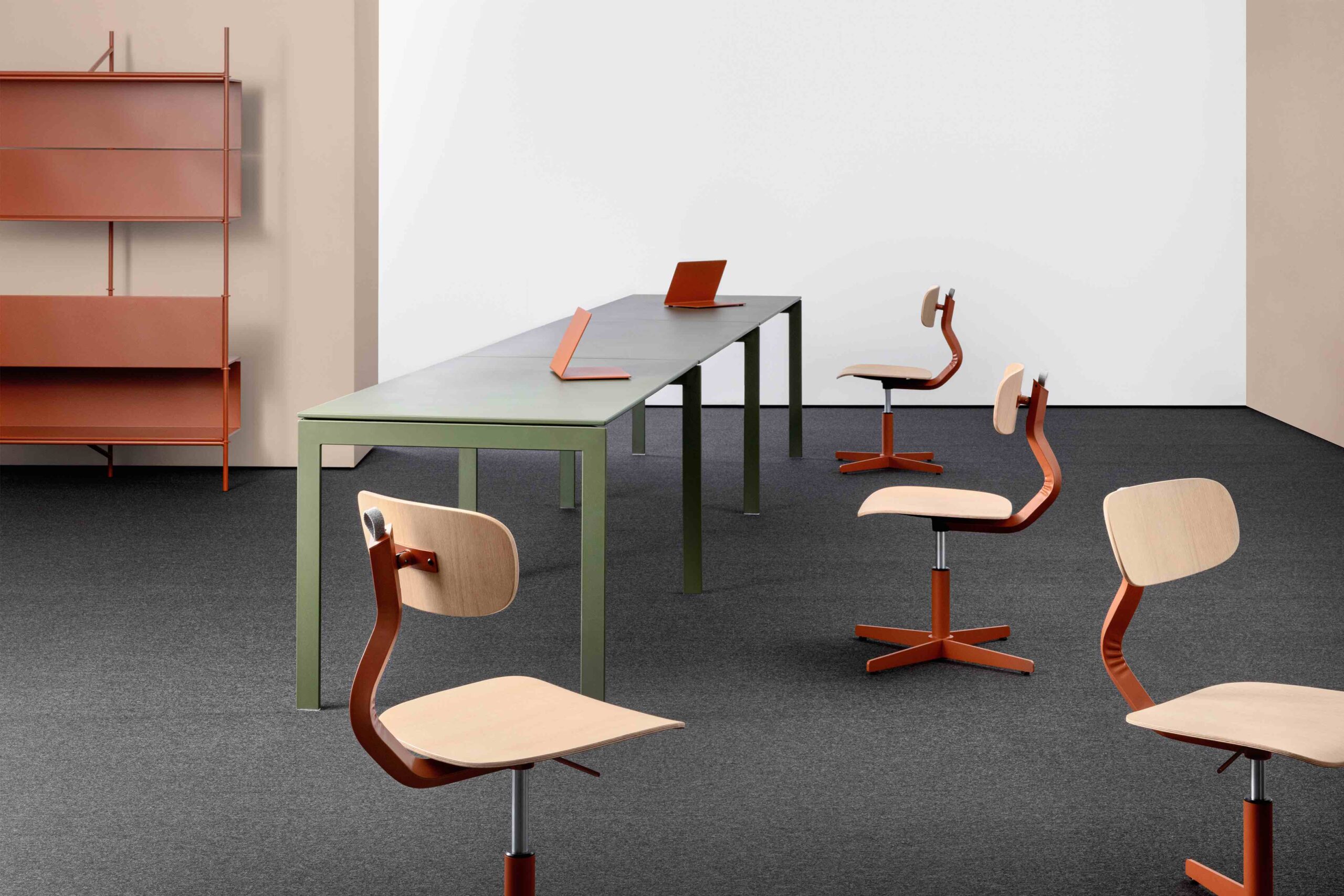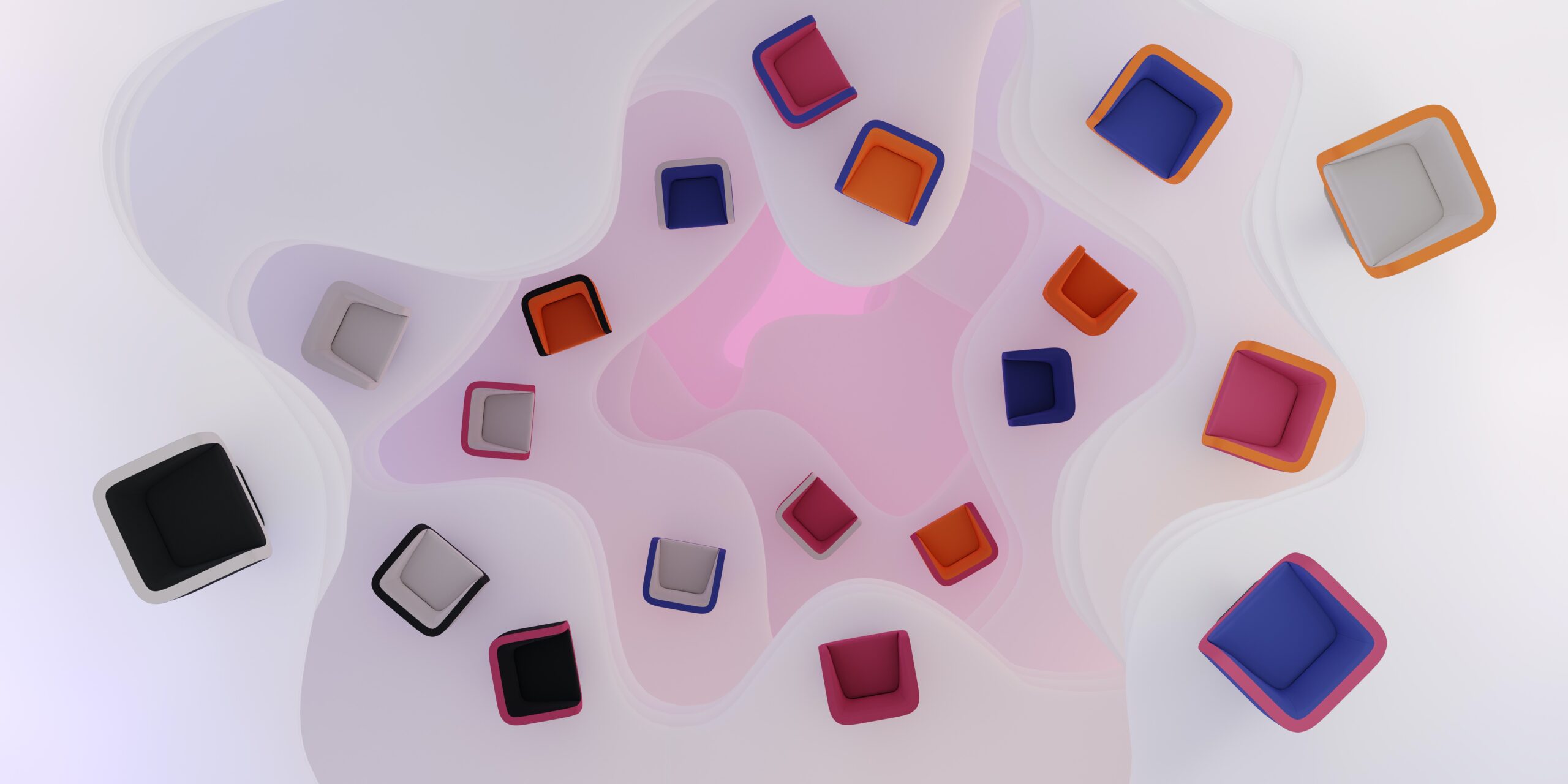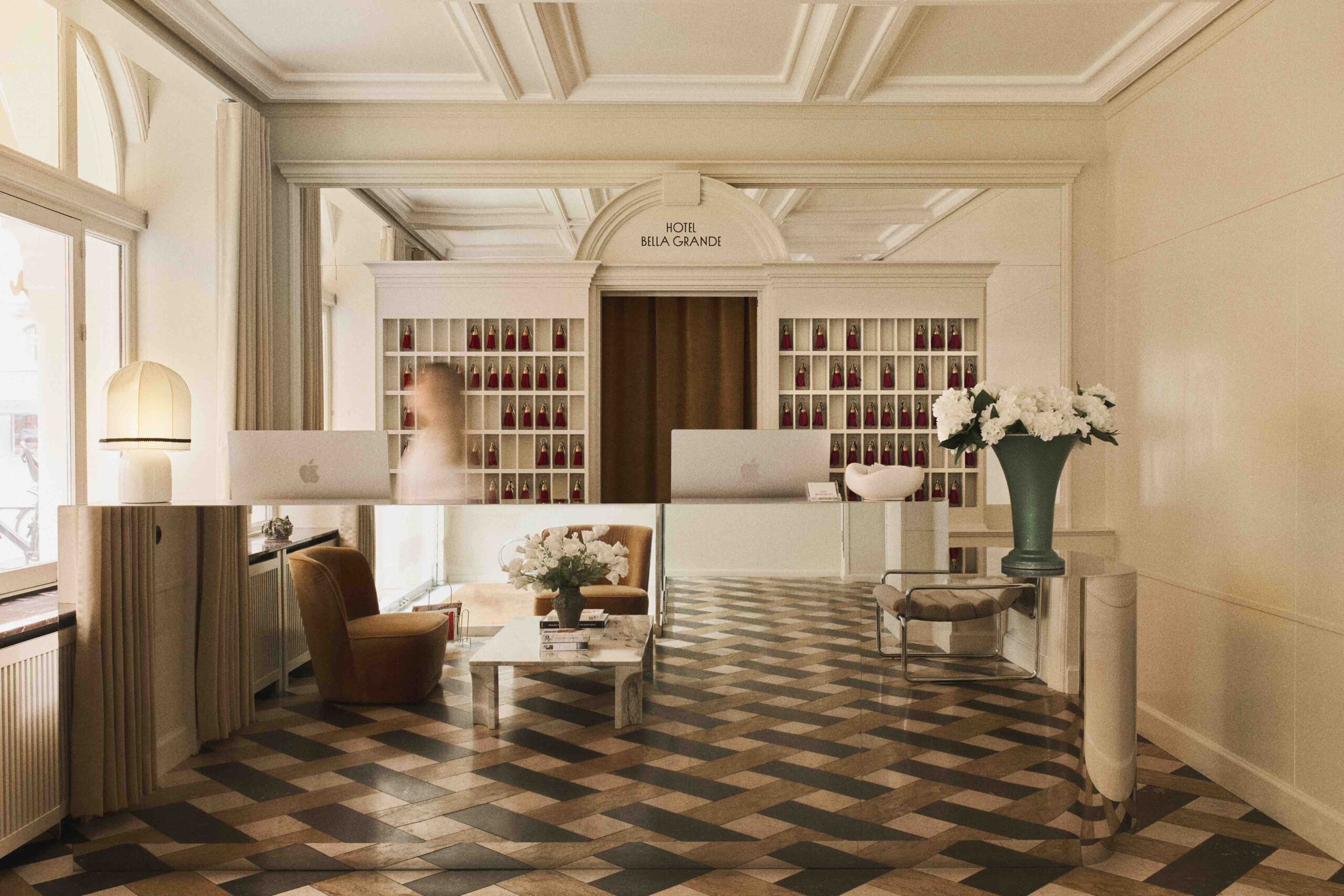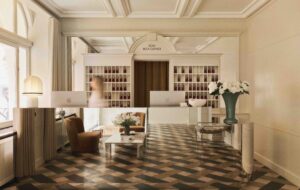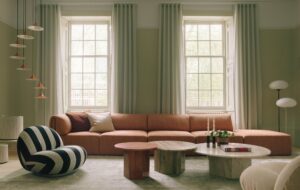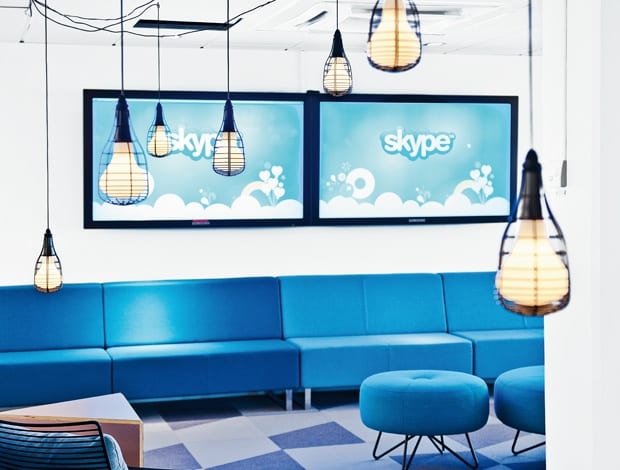 Skype’s true-blue branding was a starting point for the interiors|PS Arkitektur’s “cartoonish hyper-reality” has taken over this former brewery in Stockholm|Angular furniture and graphic carpets express connectivity – Skype’s reason for being|Green room: one of the “little oasis” coffee points|Skype’s cloud-like logo provided the inspiration for the suspended lighting|Bespoke wallpaper, and the world’s most purple carpet||
Skype’s true-blue branding was a starting point for the interiors|PS Arkitektur’s “cartoonish hyper-reality” has taken over this former brewery in Stockholm|Angular furniture and graphic carpets express connectivity – Skype’s reason for being|Green room: one of the “little oasis” coffee points|Skype’s cloud-like logo provided the inspiration for the suspended lighting|Bespoke wallpaper, and the world’s most purple carpet||
It’s hard to believe that internet calling company Skype has been connecting people the world over for nearly ten years now. Its survival is no doubt down to its successful harnessing of nerd power, which has kept the company on the cutting edge while so many others have fallen by the wayside. (Myspace, anyone?) Stockholm is home to Skype’s technocrats, and their expanding numbers meant a move to a disused brewery in the waterfront district of Slussen. The company hired Swedish multi-disciplinary practice PS Arkitektur to transform a place of beer-kegs into a state-of-the-art sound engineering facility. Project leader Mette Larsson-Wedborn explains further: “The Stockholm office is where they develop the audio visual part of the business so it needs a really, really good acoustic, which the old office didn’t have.” Also on Skype’s shopping list was a space that defined them as a brand, not in a bombastic or forceful way, but with intelligence and a sense of fun. “Skype wanted to show that this kind of office can work for a technical environment, not just in, say, the marketing department,” says Larsson-Wedborn. “It is not an office full of paper, with people in suits. It is geeks in jeans.”
The only problem was time. Skype had wanted to sign the lease on the building it had discovered before the summer break. Anyone who has visited the city at this time of year can testify to its 28 Days Later feel, so nailing down some hard details before everyone disappeared to the fjords became priority number one. “It came down to who could deliver the right plan and materials, so we knew what kind of costs we were talking about. We could do it in time.” According to Larsson-Wedborn, the building it didn’t offer much more than four bare walls and a metal staircase that connected the ground floor to a mezzanine level. The layout didn’t exist. First off, the practice tore down all the inner walls, constructing audio labs, chill-out space and a kitchen on the ground floor while reserving the upper level for meeting rooms. The feature that leaps out when looking at the fit-out is the contrast between monochrome geometric patterns and vibrant splashes of colour. “We were trying to use Skype’s own colour scheme, adding more colours from within that family, but we didn’t want it to feel like you’re walking through Skype’s website, or in a commercial for the company,” Larsson-Wedborn says. It wasn’t simply a case of extending the Skype palette, however: PS also wanted to create a sense of cartoonish hyper-reality, like you might find in a computer game: “It was totally the opposite of what we normally do.”
The practice drew further contrasts with its choice of furnishings. Soft amorphous seating is scattered throughout the ground floor, as if someone had dropped a bag of giant marshmallows. Alongside these blobs are angular tables constructed from wood veneer and MDF by PS specifically for Skype – neatly echoed in the triangular carpet pattern underfoot. Taking inspiration from Skype as a “global connector”, the practice conceived the carpet design as a series of nodes. “We were like, OK, that can be a pattern for the floor and then you could extrude some of these and get tables. The shapes become volumes.” More triangles appear in the office space courtesy of a bright orange electricity cable that zig-zags up and down a monochrome wall. On the large ground floor, the practice left much of the space open plan. Next door to the main working area is a calming blue breakout space with caged light bulbs dangling from the double-height ceiling. There are two coffee points situated on this floor and, in response to concerns that some of the space felt a little cold, Larsson-Wedborn and her team added leafy prints, green chairs and a timber floor made from factory offcuts to make the whole thing a little more bucolic: “We wanted it to be like a little oasis.” The natural element is continued around the stairs by some large light orbs. It’s a subtle-ish reference to Skype’s cloud-like logo and is designed to give anyone ascending the iron staircase the feeling of walking in the clouds.
So far so good, but the specialist nature of Skype’s work nearly cancelled out the building’s best original feature. As already mentioned, excellent acoustics were the most important technical aspect of the project, but they are a quality not normally associated with former breweries. The obvious solution was to create a large void above by adding a suspended ceiling. Understandably, Larsson-Wedborn was not overly keen at this prospect. “Skype immediately suggested that we should put a suspended ceiling, but that would have destroyed the industrial feel of the building. In the end we covered it in acoustic render – but it was a really big challenge to keep it.”
Acoustics also presented a formidable challenge on the upper level, where lower ceilings coupled with acoustic tiling could have resulted in claustrophobic meeting rooms. To attack this problem, hundreds of metres of sound absorbers were added to the walls, and extra insulation was laid underneath the rich carpets. PS then really went to town in the meeting rooms, with deep purple and vibrant orange carpets, and walls adorned with depictions of cables, nodes and headsets.
The office certainly doesn’t look like your average headquarters, but with all that colour, one wonders whether it will date too quickly. In the end, it went from industrial husk to high-tech office in roughly eight months. Needless to say the job gave Larsson-Wedborn her fair share of sleepless nights. “The shortage of time was stressful and made things a little difficult, but as a client Skype was very good,” she says. “They had
a good budget, they wanted it to be special and they were open to ideas. So in hindsight, it was fun.”

